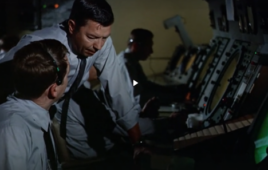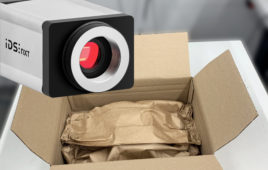There are a lot of operational hurdles to consider when it comes to offering a true multi-screen experience across TVs, tablets and mobile devices, but cable operators can cut through the clutter by following a few key strategies.
According to Barry Falvo, principle member of technical staff at Motorola Mobility, the proliferation of devices for multi-screen viewing has led to technology fragmentation. Speaking during the multi-screen engineering session Monday, Falvo proposed a centralized approach that provides entitlement enforcement, one platform for billing and policy rights, and a transparent user experience.
Yaron Raz, director of digital video solutions at Harmonic, said cable operators need to consider what types of devices and digital rights management systems they will support – both inside the home and on mobile devices.
“It’s the challenge of really trying to minimize the operational headache around authorizing these different devices and different content across subscribers,” he said. “As far as the transcoding, one of the main things to determine is the specific profile and specific bit rates that you want to transcode the content to.”
While the immediate challenge is providing video to tablets and mobile devices, Raz said that will change over the coming year.
“There are a lot of considerations to determine how many profiles and what profiles to use,” Raz said. “What we see today with operators is usually four to five profiles for an HD channel. That goes up to 720p30, and in the future a lot of the operators are looking to get to a full HD, which would be a 720p60 or 1080p, and that would be one or two additional profiles.
“Today, the real focus is on those second or third screens – the iPads, the tablets, the PCs – but definitely 12 months from now, we’ll begin to see this technology driving connected TVs and game consoles, really going to that 52-inch screen, which also means you need high quality.”
While there’s no right or wrong answer, Raz said cable operators also need to consider whether they separate their mobile Web transcoding from their traditional encoding resources or consolidate them. There are operational efficiencies with consolidation, as well as simplified troubleshooting and operational processes.
Cable operators also need to consider whether it’s more beneficial for them to own a content delivery network or use “some sort of CDN in the cloud or managed service in order to distribute the content.”
Steve Tranter, vice president of broadband and interactive at NDS, said cable operators should consider a centralized headend with metadata that provides poster art for video content. The centralized headend saves memory on a set-top box, while the DOCSIS capabilities allow the box to go back to the headend for richer data on-demand.
Cable operators can also create templates – which would dictate when certain content is available on any given device, such as a PC – to aggregate Web-based and VOD content onto screens for viewers.
Neustar’s Peter Davis, senior director and distinguished member of the technical staff, said that cable operators should focus on the end users, and not just the various screens. Video providers need to develop an ID management strategy, but they also have to be aware of legislative obligations, such as the Child Online Protection Act (COPA).
“Customers are customers, and not a screen,” Davis said. “Focus on the users first, then the display.”
Filed Under: Cables + cable management, Industry regulations




